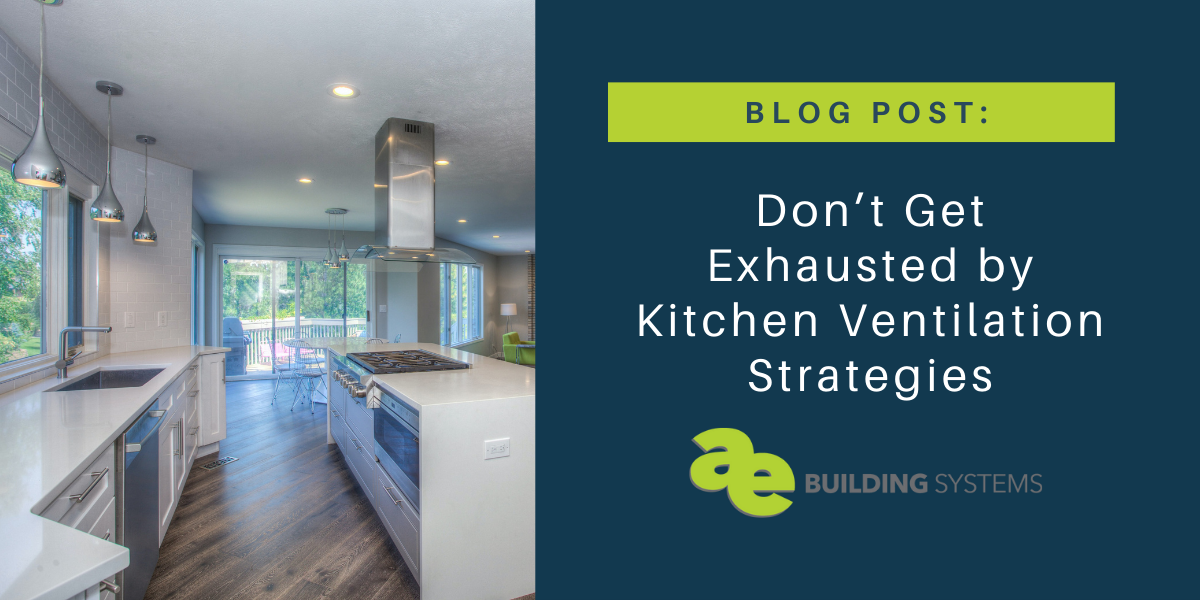An Overview of the Options & Approaches for Kitchen Ventilation
Your kitchen must be so exhausted! A lot of work happens in the kitchen, so not only are your appliances doing a lot of work, but the air needs to be exhausted out to keep the air quality in check. There are typically two main elements involved in venting a kitchen space: capturing and removing pollutants and exhausting them outside. And whether you’re dealing with a Passive Haus kitchen or just wanting better air quality, ventilation strategies are an important thing to consider.
The Great Debate: Vent Out or Recirculate?
Wall-Mounted Hoods
A common method for ventilation is a wall-mounted hood, which provides a steady, effective fume capture, especially compared to island extractor hoods. Within the same capture capacity, wall-mounted hoods can have a 40% lower flow rate compared to island extractor hoods! Mounting standards suggest that they be placed 50-60 cm, or about two feet, from the cooktop. When installed higher, which is very common, they lose effectiveness as air can escape out into the rest of the room.
Recirculate?
The jury seems to still be out when it comes to venting vs. recirculating. That said, many experts argue adamantly that venting to the exterior is an absolute must. A PHI report notes that “no moisture loads are removed with recirculation operation,” so other ventilation is required, and “in order to ensure proper functioning of the recirculation air system and limit the pressure losses, the air filter must be cleaned and/or replaced at regular intervals.”
Is Exterior Venting 100% Effective?
From an air quality perspective, exterior venting appears to be a no-brainer! However, in Passive House buildings, the use of a kitchen exhaust air system may actually increase the demands on the heating system. It creates another penetration within the building envelope, requiring even more focused attention for airtight construction.
As a result, when it comes to Passive House design, some folks lean toward recirculation hood systems.
Small dwelling spaces, like apartments, also become difficult for exterior ventilation, and lean toward recirculation instead.
So, what is the best approach?
First off, keep in mind that kitchen ventilation is a hotly debated topic and you’ll find experts that have different approaches. Not everyone is approaching things evenly. Some care more about air quality than energy-efficiency and vice versa.
From our perspective, as we weigh the Passive Haus approach, plus healthy air quality, here’s how we would approach this puzzle for a brand new Passive Haus project:
- Use an induction range, rather than an electric or gas stove. Induction cooking produces fewer VOC’s just by nature. Plus, it’s more energy-efficient!
- Ensure the duct to the kitchen is sufficiently large to pull at least 300 CFM from the kitchen.
- Recirculate the kitchen ventilation system, either with a downdraft or a hood, using a carbon filter. Pair this with the CERV2.
- Set up the CERV2 zone damper and a wireless transmitter on the vent to exhaust the kitchen. The wireless transmitter communicates with the CERV2 unit to go into “boost mode” or max the volume within a set time period. Ideally, set up the CERV2 to pull all return air from just the kitchen space, rather than both bathroom and kitchen, by using the zone damper and cutting off the returns from the bathrooms.
Why CERV2?
The CERV2 for kitchen ventilation is effective as it can reduce and minimize penetrations in the structure’s building envelope, balances filtered make-up air, supports energy recovery, and reduces pollutant levels in a home. The CERV2 has so many amazing benefits, especially when you’re looking for energy-efficient, or Passive Haus tactics. Take a look at a good overview of how you can improve indoor air quality with the CERV2.
As we mentioned above, this is a highly debated topic and there are multiple approaches to balance good air quality with energy-efficiency. If you have questions or want to know more, feel free to reach out to our team here at AE Building Systems. We love to research the latest and share our knowledge on the techniques, as well as top products to use in your next kitchen project.


Leave a Reply